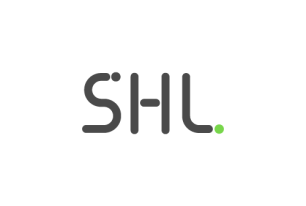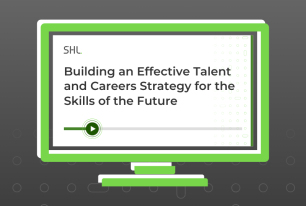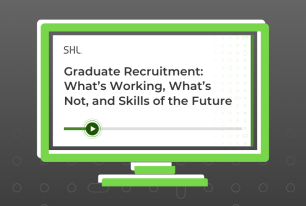Top 3 Questions Your Talent Acquisition Strategy Needs to Answer in 2023
Learn more about identifying best-fit candidates with SHL’s talent acquisition framework.
Share
Talent leaders and their teams are facing the challenge of quickly adapting to unexpected changes. The ongoing pandemic, hiring freezes, and fluctuating economic conditions have highlighted the importance of being able to pivot, as it can both reduce risk and give organizations a competitive advantage. In 2021, 85% of talent acquisition leaders anticipated difficulty in forecasting future talent acquisition needs, with 95% expecting their organizations' talent acquisition requirements to be highly volatile over the next two years.
2023 is here and so is volatility. 85% of executives believe that organizations should create more agile ways of organizing work in order to adapt quickly to market changes. Meanwhile, a Gartner survey found that 46% of Human Resources leaders still consider recruiting to be a top priority.
Organizations with incomplete or fragmented assessment solutions may struggle to address these challenges in a constantly changing environment. Talent teams need to be equipped
to evaluate internal and external candidates for a wide range of roles, from collections representatives to interns and software engineers, as well as roles that may not yet exist.
Predicting new hire performance depends on an objective understanding of potential, readiness, and fit. This means talent teams need to be able to answer three key questions objectively and at scale:
- Potential – Can the candidate develop into a top performer?
- Readiness – Will the candidate quickly boost productivity?
- Fit – How well will the candidate fit into the company culture and job?
Talent teams that design their assessment and interview processes around this framework will be better equipped to quickly respond to changing business demands and implement hiring strategies that align with key objectives.
1. Potential – Can the candidate develop into a top performer?
Prioritize potential if you are focusing on workforce planning, career pathing, future role success, and promotability.
Personality and competencies form the base layer of mindsets and behaviors. Understanding a person’s pattern of behaviors, attitudes, feelings, and habits will be most important in corporate roles where a long tenure is expected or there is little existing experience.
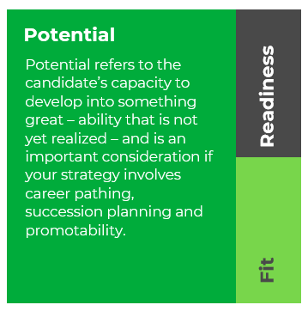
SHL’s Graduate, Managerial, Professional, and Volume Hiring solutions can clearly identify a candidate’s potential for the long term. The toolkit to objectively measure potential and add to your talent dataset may include:
- Personality
- Competency, behavioral, and soft skills
- General cognitive ability
- Motivations
- Competency-based structured interviews
2. Readiness – Will the candidate quickly boost productivity?
When job readiness is the top priority, assessments and simulations rapidly identify hard skills like solving software development problems or soft skills such as communication. Fit and potential may be less critical in these roles when it is expected that tenure will be shorter.
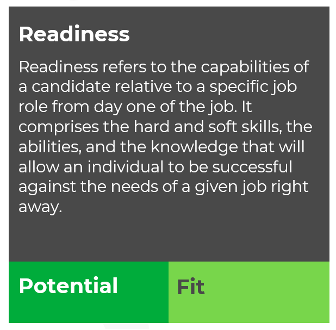
Despite the importance of readiness, only 1 in 5 enterprises have implemented a consistent, skills-based hiring approach. Of those respondents, 32% say they have not implemented it because of difficulty keeping up with changing skills needed by the business, while 20% say that insufficient skills data is a blocker. SHL handles these pressing needs and provides the insights required to use skills data to make critical decisions.
Technology and Volume Hiring Solutions are well suited to quickly identifying job readiness. The toolkit to evaluate candidate readiness and meet changing needs of the business may contain:
- Simulations (contact center, software development)
- Situational judgment assessments
- Job-focused soft skills assessments
- Technology and field-specific knowledge assessments
- Situational, structured technical, and skills-based interviews
Predicting new hire performance depends on an objective understanding of potential, readiness, and fit.
3. Fit – How well will the candidate fit into the company culture and job?
Fit complements both potential and readiness. Teams might emphasize fit where turnover or low engagement is a fundamental issue within the organization. Fit includes culture, company, team, and the job itself.
Fit can be a top priority after an organization has gone through a values exercise, and the culture must be carefully maintained. It is important to note that fit goes two ways. The candidate’s experience can signal to them that an organization may or may not be a good fit for them. It can help a candidate be aware of the demands and conditions of the job–even if they are not right for them.
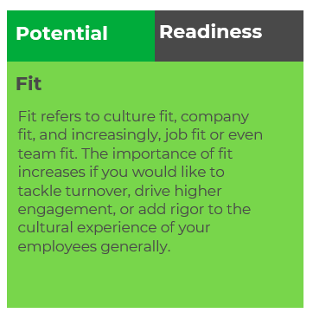
The toolkit to make fit a two-way evaluation might include:
- Realistic job previews
- Values assessments
- Candidate experience management
- Values and culture interviews
How to get started
Candidates and roles are multi-dimensional. Ensuring that talent teams have the toolkit to assess, interview, and hire across potential, readiness, and fit will put you on the path to success when the next wave of change comes.
To implement this hiring framework in your organization, consider the following steps:
- Evaluate the capabilities of your current assessment tech stack. Be on the lookout for fragmented assessment types across business units and look for opportunities to consolidate. This can reduce cost, increase your access to a breadth of assessments, and prepare you to build your talent intelligence dataset.
- Audit usage of assessments and interviewing solutions in your organization. If there are teams using their own tests and tools, have a discussion around goals. You may find that there is an opportunity to realign and develop consistency across hiring processes. This will save time and produce more objective hiring outcomes.
- Perform a job analysis on open roles. This will reveal where potential, readiness, and fit are most critical and how they should be weighted to identify the right talent. Compare those needs to the capabilities of your current assessment tech stack.
Partner with SHL to achieve the perfect balance of potential, readiness, and fit in your talent acquisition strategy.






